Leading landscape architect Di Lucas’ creative and sustainable influence can be seen in many of the country’s big projects, so it’s no surprise her own outdoor space works in peaceful harmony with its environment
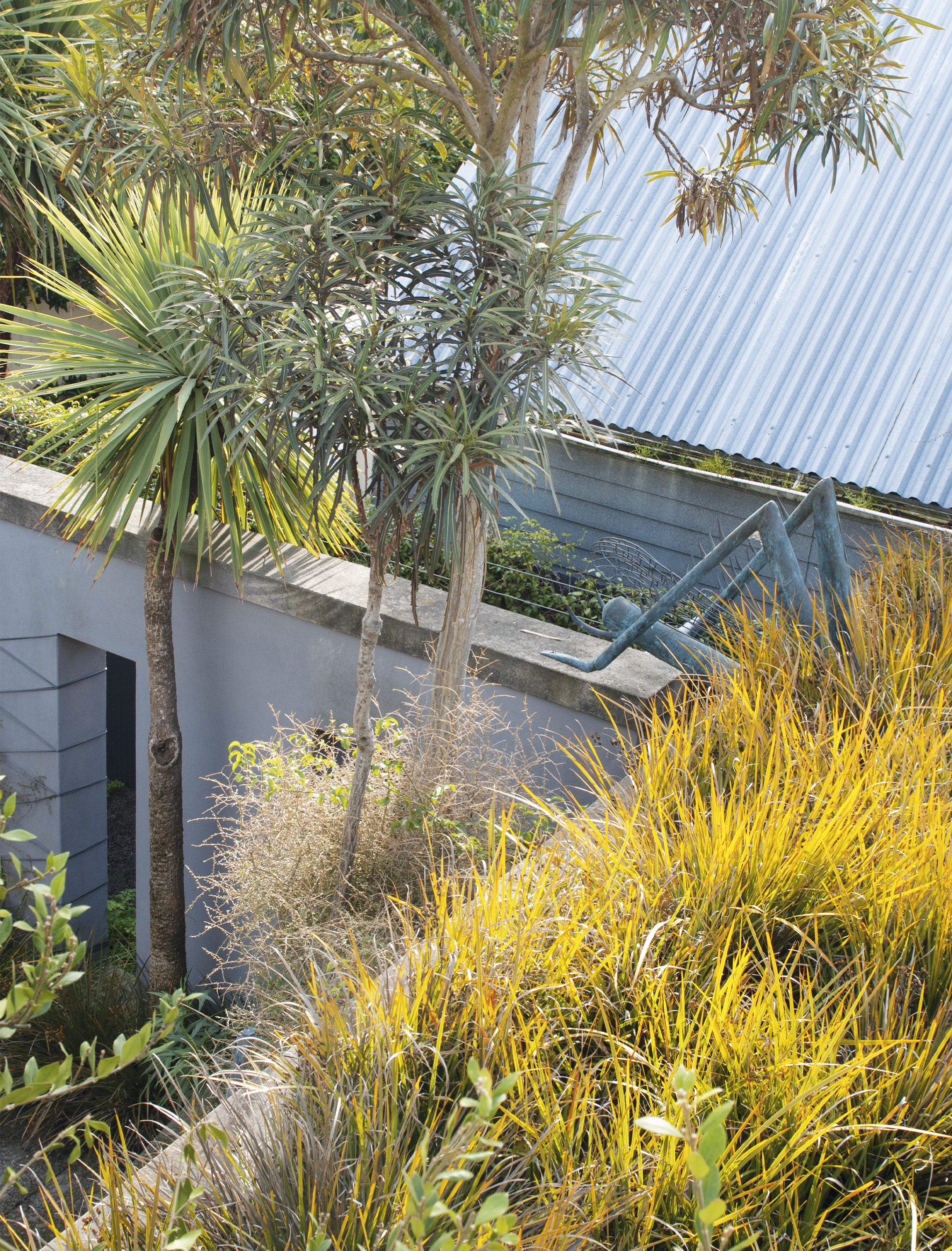 A well-considered garden design references not only the architecture of the building it surrounds, but also the wider landscape including its natural and cultural heritage.
A well-considered garden design references not only the architecture of the building it surrounds, but also the wider landscape including its natural and cultural heritage.
For Di Lucas, one of New Zealand’s leading landscape architects it was a given that the award-winning design of Marokapara, her Ōtautahi Christchurch base would take those three factors into account. Adding to the complexity is the fact that her home is on a tight inner-city site, which also accommodates her landscape office, Lucas Associates. Despite these constraints the
garden is a place of quiet beauty and elegance, subtly revealing its deeper connections as you linger and explore.
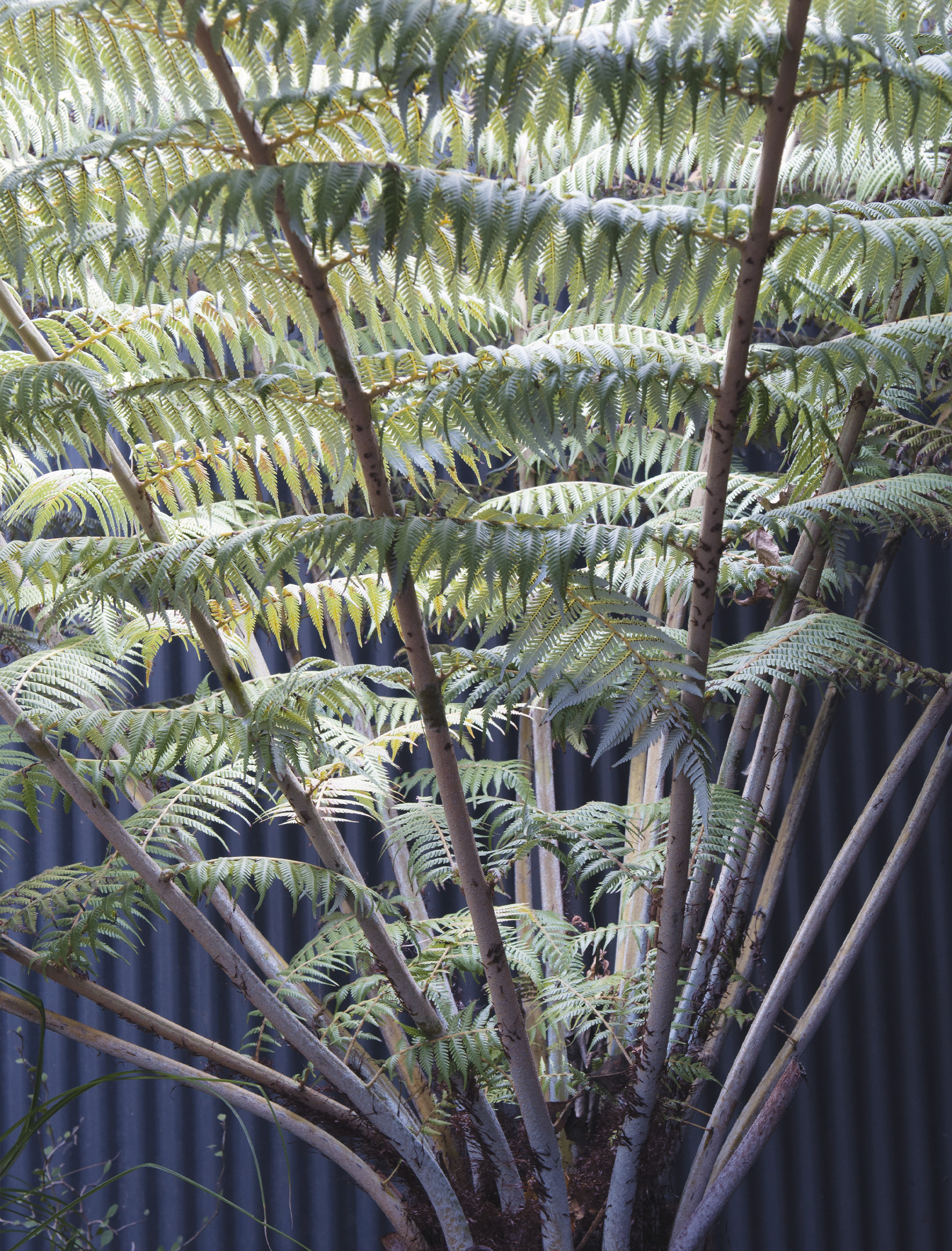
Di and partner Paul Michael live in a two-storey Manchester Street duplex designed in 1946 by art deco architect Colin Lamb. The northern townhouse was purchased in 1991 and renovated with living upstairs and office below. Seven years later she bought and renovated the southern townhouse. During the earthquake in 2011 the neighbouring buildings were all demolished but her duplex suffered little damage, largely due to its location and solid construction.
“These are spring-fed lands and a stream historically flowed along the rear of the site from Salisbury to Peterborough Street,” she points out. “While levees rupturing was a major cause of earthquake damage across the city, the Marokapara site is a robust node of land.
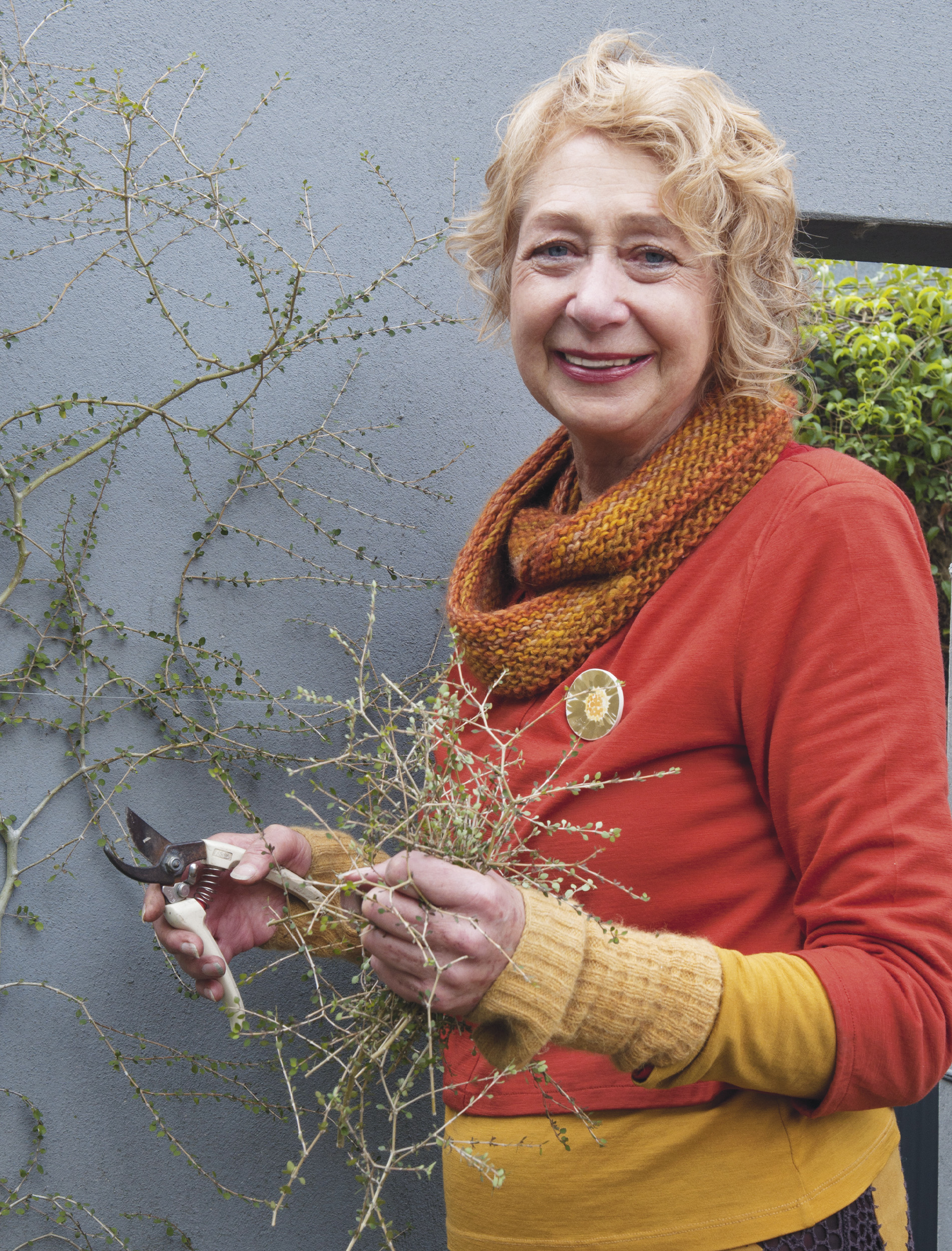
Its survival has been attributed to the good land, the well-designed, well-built structure, and that it had been blessed (by tangata whenua).”
Although it’s a small urban site, there are a variety of outdoor spaces around both townhouses including a green roof over the garage, a north-facing balcony, three courtyards, a lush forest dell, and vegetable gardens. “There is no lawn to be mown. No fence to the street – the doors are accessible. It is community-friendly, but provides private and useful spaces.”
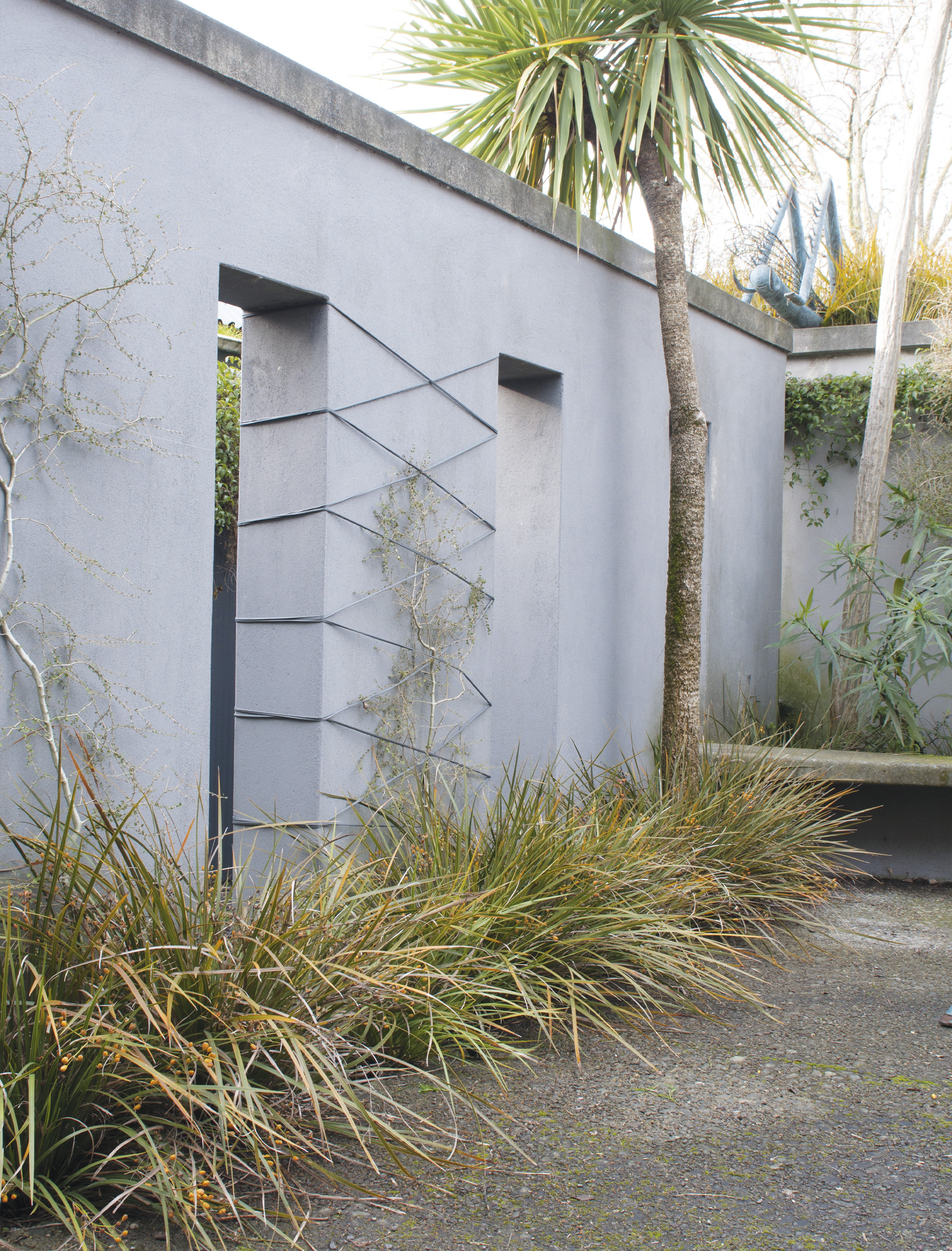
Nature and design
Awarded the ONZM (Officer of the NZ Order of Merit) in 2019 for her services to conservation, unsurprisingly Di’s site is filled with plants and materials that reflect the local ecology. “Though the land has long been drained, the landscape design for the duplex responds to the underlying nature of the place,” she explains. “The Kahikatea – kererū – mānatu, lush older plains ecosystem, plus a few species added from nearby naturally drier ecosystems to ensure resilience.”
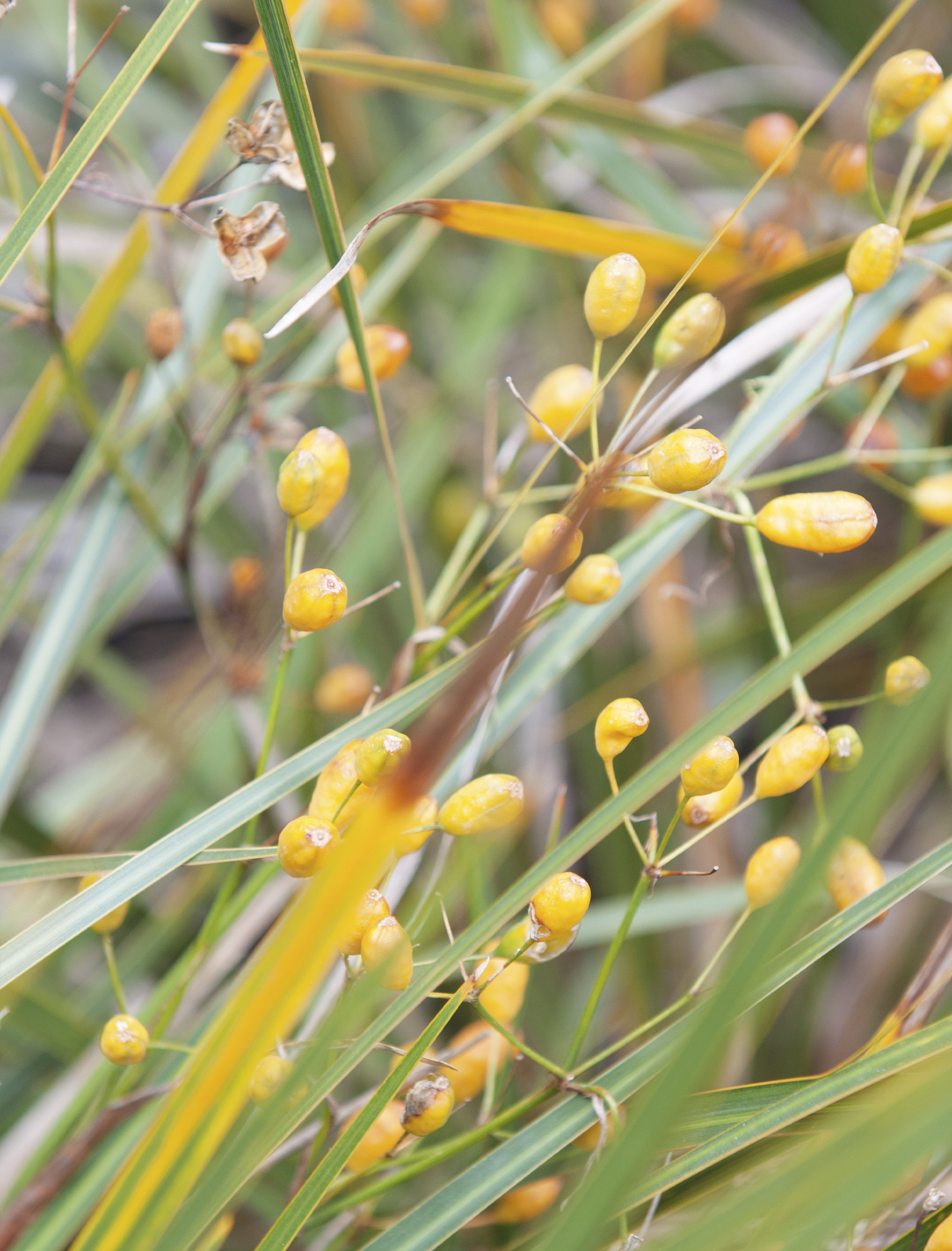
Perfect plantings
There were just a few plum and cherry trees on the site when she bought it. These were replaced with local native trees including tītoki, putaputawētā (marbleleaf), ti kōuka (cabbage tree), mānatu (lowland ribbonwood), horoeka (lancewood) and whauwhaupaku (five finger). Along the street-front she planted a grove of plains-sourced kōwhai now with kōtukutuku (tree fuchsia) beneath. The tree ferns, whekī, whekī ponga and ponga extend into the courtyards, with lush ground ferns beneath.
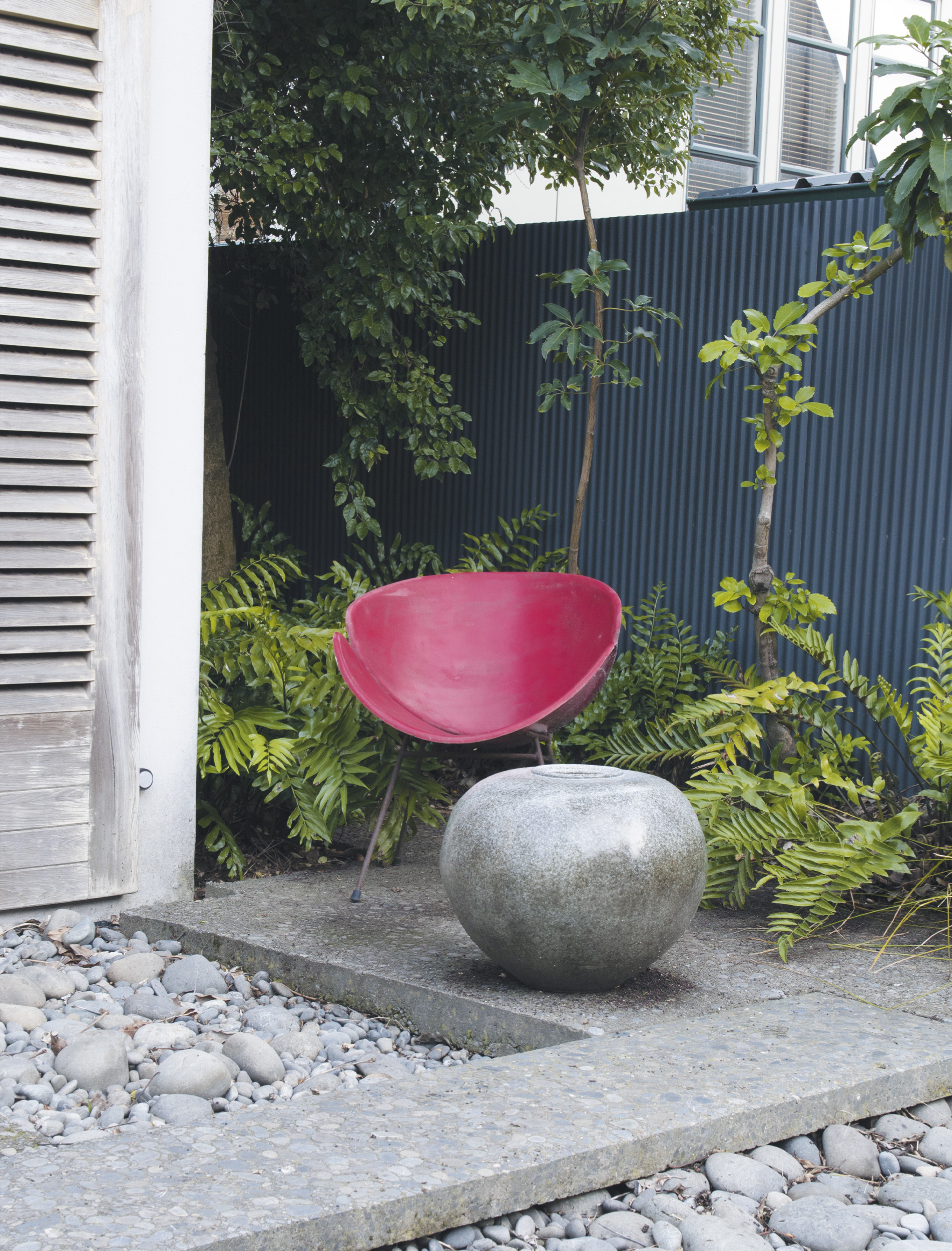
Around the boundaries, putaputaweta, akiraho (Olearia paniculata) and Coprosma form organically shaped hedging. The Coprosma is a divaricating form discovered in Central Otago and formally named C. ‘Di Lucas’ in her honour by its finder. “Lots of birds feed on its wee pearly pinkish berries. People walk along beside it on the street and enjoy the birds, especially touhou (waxeye) and piwakawaka (fantail), feeding inside it.”
The golden leaved mīkoikoi, the local native iris (Libertia ixioides), is planted on the green roof above the garage and levels that step down into the courtyard. Climbers such as kaiwhiria (Parsonsia capsularis), puawānanga (Clematis forsteri) and Muehlenbeckia complexa (pōhuehue) adorn the balcony and green roof. “They provide sustainable greening that is much more practical, affordable and easily maintained than using ‘green wall’ technology,” asserts Di.
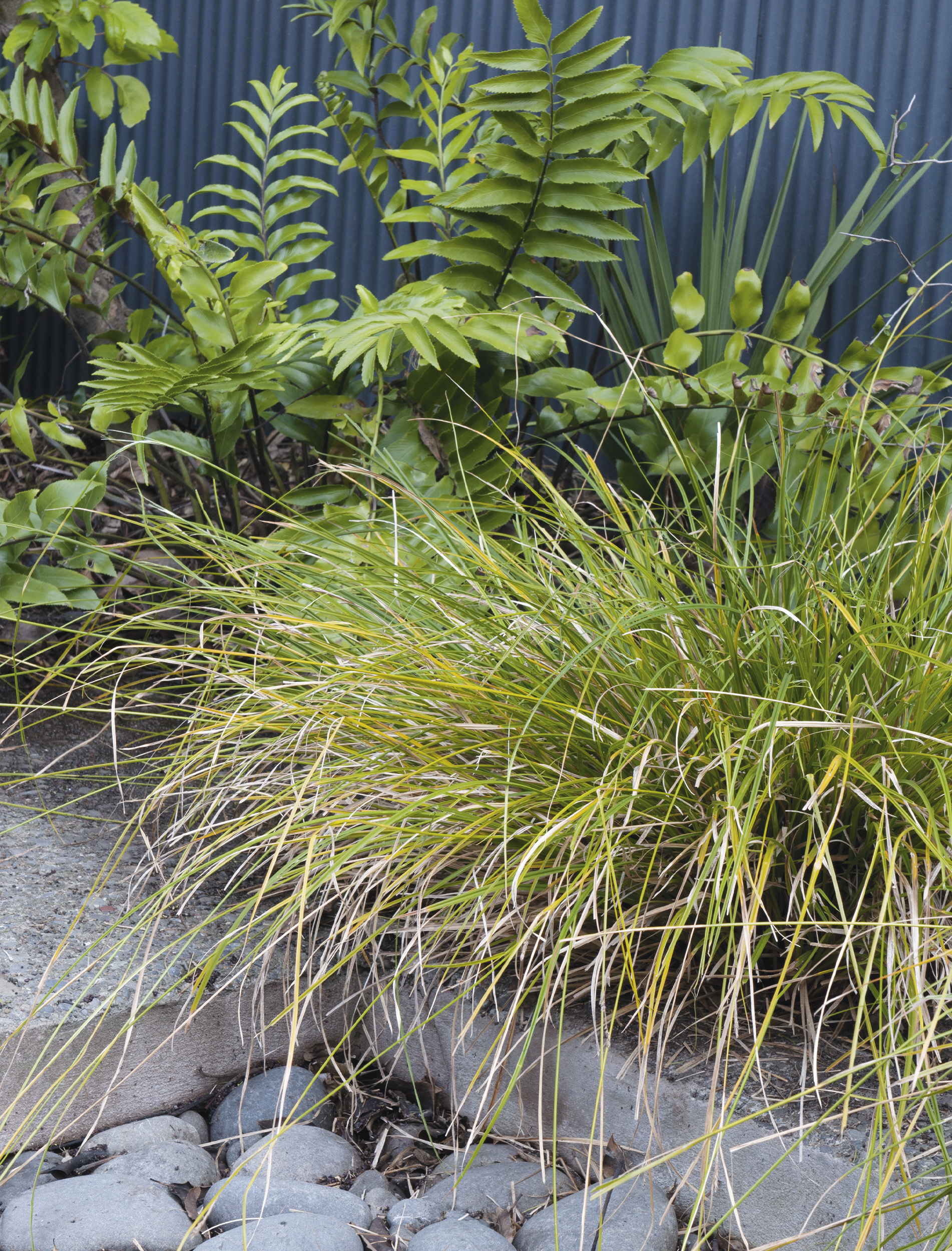
Local connections
As well as the plants, Di has ensured that materials in the garden also connect to the wider environment of the Canterbury plains. Exposed greywacke aggregate concrete, some ground to a terrazzo finish, is used for paving, seating and other elements. River-worn greywacke stones of various sizes and ‘lawns’ of the native groundcovers Fuchsia perscandens, Lobelia angulata (panakenake) and Leptinella dioica also cover the ground. Forming a sculptural focal point is a large piece of totara that came from a tree buried nearby several thousand years ago when the Waimakariri river flooded these lands.
“The plains involve layers of river-deposited rounded greywacke stones and sediment,” she says. “The landscape design is a response to the plains landscape, referencing a series of alluvial terraces, patterning and materials that culminate down toward the coast.”
Even vegetable beds are ingeniously grown in woven kete crafted from fallen tī kōuka (cabbage tree) leaves by local artist Robyn Webster. The kete typically last about three years. The balcony kete grows salad greens. There were two large vegetable kete in the front garden but these have now been rewrapped with macrocarpa. All the organic waste is processed in worm farms, which in turn provide vermicast and liquid fertiliser to feed the vegetables.
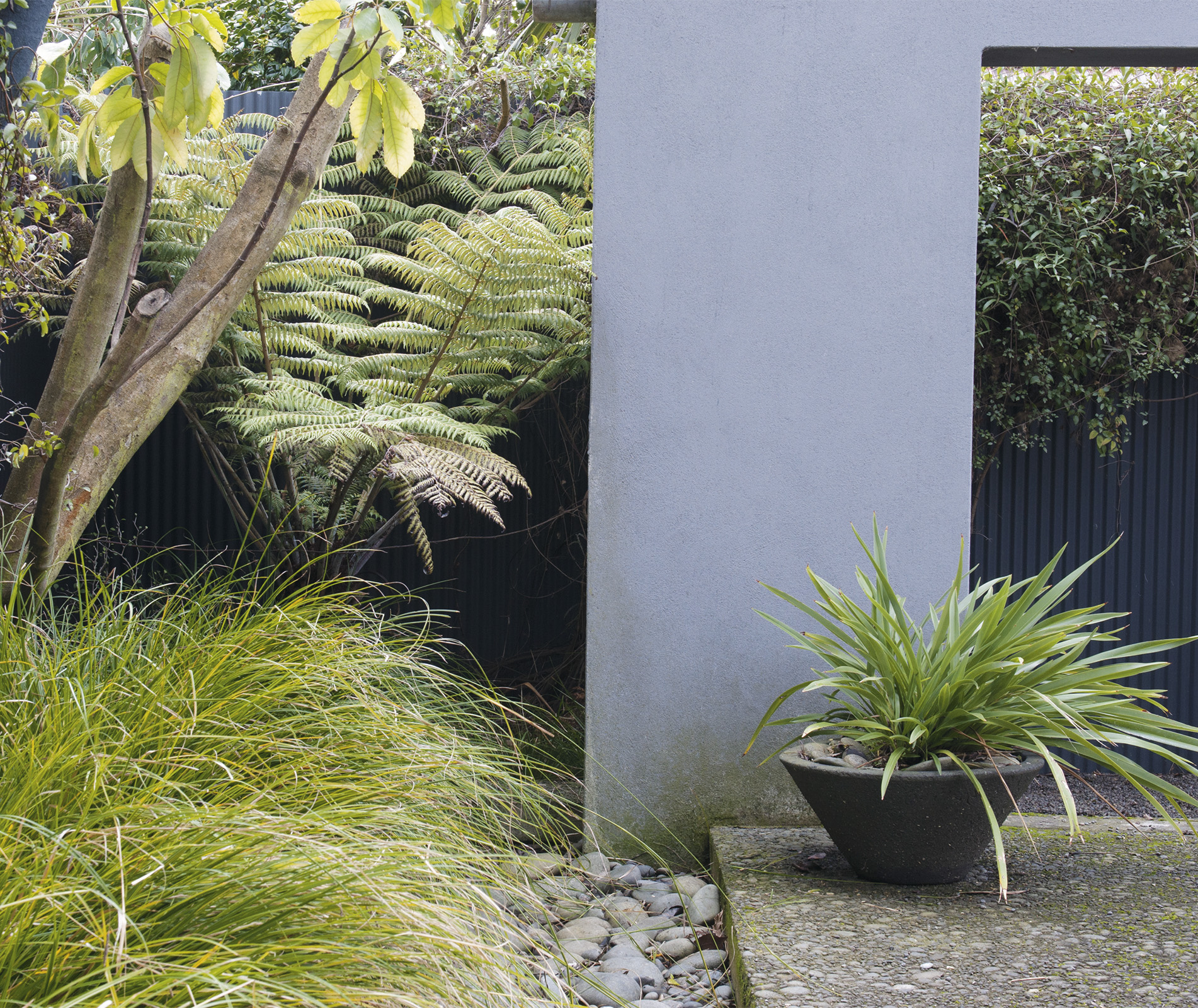
Bless this home
It seems fitting that this designer, who has spent many years advising local bodies and communities on local ecosystems, should have a place called Marokapara.
“It was given this name when blessed by tangata whenua almost 30 years ago and it references a woman who in ancient times advised on forests and crops in these lands,” says Di. Three decades later, the garden is still very much a reflection of contemporary sensibilities. As Di puts it, “The layers in this landscape, the natural underlayers of the alluvial system and its lush wet plains ecosystem; the cultural heritage that underpins this Ōtautahi landscape; the mid-century design of the era when the duplex and its former neighbours were built – and the sustainable ethos of today.”
Lucas Associates native plant guides for Ōtautahi Christchurch, which goes live this month, received the Gold NZILA Award in 2000, and demonstrations at Marokapara won NZILA 2002 awards for both Landscape Design and Sustainable Resource Use.
EXPERT PROJECTS

Create the home of your dreams with Shop Your Home and Garden
SHOP NOW











